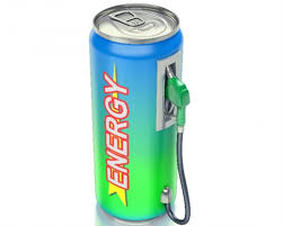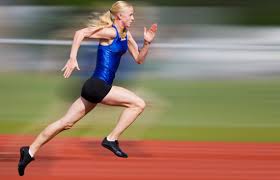So, some of us have our nutrition dialed in, some don't and some keep playing with it in search of the "magic". As Masters athletes get older, in order to hang out to our speed and performance, it because even more critical to dial things in and avoid making mistakes that the young guns can afford to make but we Masters cannot. I thought it would make sense to offer some tried and true guidelines that I would highly suggest you start to follow if you do not already.
The body can absorb 4-6 calories per minute, or about 250-350 calories per hour. Below this and you risk under-fueling, particularly in events lasting longer than 3 hours. More than this and you risk bogging your GI Tract down and cratering mid-race. Ideally, you would want to hook yourself up to a drip that would dose out 4-6 calories every minute. That would be the most steady and efficient way for your body to receive its nutrition. Unfortunately, this doesn't work in the real world.
So, you can approach your nutritional needs in one of several ways - you can take in small amounts often or large amounts less often. You can take in solids or gels or liquids or a combo among the three. Keep in mind that the more you take in at any one time, the more energy and blood is going to be diverted away from the working muscles and into your stomach to focus on digestion. This robs your muscles of the fuel they need to perform optimally and you end up burning more calories than normal (digestion is a calorie burning event).
It would thus make sense to take your nutrition in the form of gels or liquids over solids because the first 2 forms are much easier for the body to digest - read: digested faster and with less blood / energy diverted to the stomach. It would also make sense to take your energy in more often and in smaller doses. Those who have trained enough with me know that I live by the clock while exercising. Sometimes I even set a countdown timer (especially in races) to go off every 10 minutes to remind myself to drink and fuel up.
One way to mix and match your caloric intake would be to get some of your hourly nutritional needs met via liquid form as you drink every few minutes. Then, you can punctuate things every 30-60 minutes with a 100-calorie gel. As long as you are in the 250-350 calorie-per-hour range, it's tough to go wrong. But, you should work on figuring out how your body best responds to caloric intake. Some athletes cannot stomach gels; some get an upset stomach with a complex carbohydrate drink solution; still others have iron gullets and can seemingly consume anything without issue.
Now, you need to balance this with the fact that your body can typically only absorb 16-24 oz. per hour of liquid. When it is super hot / humid outside, up to 28 oz. can be processed. Beyond that, you are risking the shutting down of your GI Tract. If there is too much in the stomach, it goes into survival mode by shutting off the normal digestive process. Think of your sink drain when it's full of coffee grounds. The water backs up and you realize you need to hit the disposal button in order to clear it all out and allow the pipes to run clean. Same goes with your GI tract. If you've watched the Ironman on TV and see some of the athletes running with a bloated stomach, it is because they ingested too much liquid, thinking "more is better" against the extreme weather conditions Kona can serve up. They are (almost literally) dead wrong.
The funny thing is, when the GI tract shuts itself down, you get thirsty. So your first thought is, "Oh, I need to drink MORE." Wrong!! Don't drink at all. You know the feeling - upset stomach, sloshing, feeling bloated, thinking that taking another sip of carb drink or water will make you barf, etc. All clear signs you have ingested too much liquid. Plus, your performance takes a nose dive. Your body wants a time out. Best thing you can do is not ingest anything at all for as long as it takes for your body to reach stasis again. Could be 10 minutes, might be 30. Point is, you can't force the turn around. Your body will let you know when it's in balance again.
Follow the guidelines above and you should avoid GI distress during training and racing. Play with your fueling strategy to find what works best. For example, you might find that a carb drink works for the first half of a long ride then switching to water and gels for the second half works better. Or, you may find that water and gels works for a long run whereas a carb drink causes upset stomach. Whatever. The goal is to figure all this out before race days comes so you are 100% confident with your fueling and hydrating strategy.
Bonus tip. Once you're back to full training after taking some time off after your final race (you are taking some time off, right?), at night right before bed start taking whey protein in 4-6 ounces of water -- one scoop on easier or lighter days and two scoops on hard or heavier days. The whey protein serves a dual purpose: 1) it spurs the nighttime recovery process into overdrive; and 2) it can have a soothing effect which helps you sleep more deeply.
Happy Training,
Coach Nate



 RSS Feed
RSS Feed